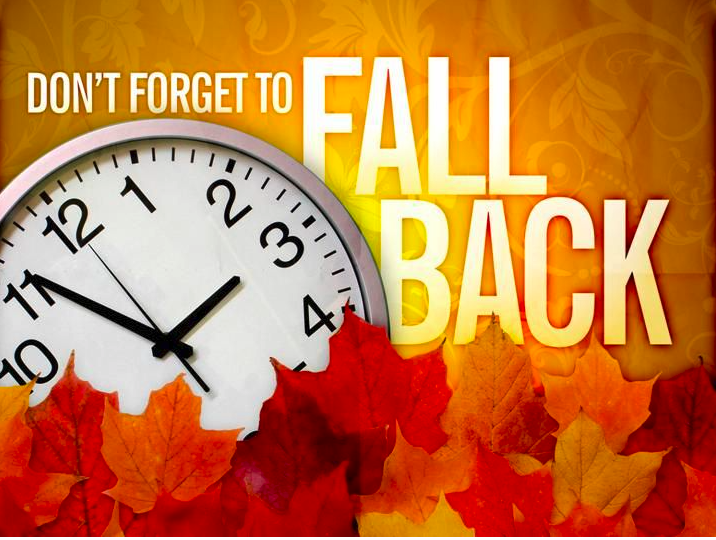
- Details
- By Native News Online Staff
Most of the United States "fall back" to Standard Time on Sunday, November 6, 2022. Officially the time change occurs at 2:00 a.m. local time when the time becomes 1:00 a.m., which means we gain the hour we lost this past spring. For many, the extra hour will allow for an extra hour of sleep.
TURN YOUR CLOCKS BACK ONE HOUR BEFORE YOU GO TO BED TONIGHT.
The time change will allow the sun to come up and go down earlier during the remainder of fall and during the winter months.
Most of Arizona and Hawaii do not participate in the time shift, so this change will not impact them.
The time change has been happening for decades. The Energy Policy Act of 2005 gave the country its current start and stop dates for daylight saving time. It starts on the second Sunday in March and ends the first Sunday in November.
The daylight saving time give the United States about 7.5 months of daylight saving time and 4.5 months of standard time.
Fire departments across the United States remind us this is a great time to change batteries in our smoke detectors, which should be tested monthly.
We will lose our extra hour of sleep on Sunday, March 12, 2023, when we "spring forward" back to Daylight Saving Time.
More Stories Like This
Native News Weekly (August 25, 2024): D.C. BriefsUS Presidents in Their Own Words Concerning American Indians
Indigenous Actor Elaine Miles Reports Detention by Alleged ICE Agents
Happy Thanksgiving from Native News Online
Coming Up on Native Bidaské: Behind the Animation: Joey Clift Talks “Pow” and Native Storytelling
Help us tell the stories that could save Native languages and food traditions
At a critical moment for Indian Country, Native News Online is embarking on our most ambitious reporting project yet: "Cultivating Culture," a three-year investigation into two forces shaping Native community survival—food sovereignty and language revitalization.
The devastating impact of COVID-19 accelerated the loss of Native elders and with them, irreplaceable cultural knowledge. Yet across tribal communities, innovative leaders are fighting back, reclaiming traditional food systems and breathing new life into Native languages. These aren't just cultural preservation efforts—they're powerful pathways to community health, healing, and resilience.
Our dedicated reporting team will spend three years documenting these stories through on-the-ground reporting in 18 tribal communities, producing over 200 in-depth stories, 18 podcast episodes, and multimedia content that amplifies Indigenous voices. We'll show policymakers, funders, and allies how cultural restoration directly impacts physical and mental wellness while celebrating successful models of sovereignty and self-determination.
This isn't corporate media parachuting into Indian Country for a quick story. This is sustained, relationship-based journalism by Native reporters who understand these communities. It's "Warrior Journalism"—fearless reporting that serves the 5.5 million readers who depend on us for news that mainstream media often ignores.
We need your help right now. While we've secured partial funding, we're still $450,000 short of our three-year budget. Our immediate goal is $25,000 this month to keep this critical work moving forward—funding reporter salaries, travel to remote communities, photography, and the deep reporting these stories deserve.
Every dollar directly supports Indigenous journalists telling Indigenous stories. Whether it's $5 or $50, your contribution ensures these vital narratives of resilience, innovation, and hope don't disappear into silence.
 The stakes couldn't be higher. Native languages are being lost at an alarming rate. Food insecurity plagues many tribal communities. But solutions are emerging, and these stories need to be told.
The stakes couldn't be higher. Native languages are being lost at an alarming rate. Food insecurity plagues many tribal communities. But solutions are emerging, and these stories need to be told.
Support independent Native journalism. Fund the stories that matter.
Levi Rickert (Potawatomi), Editor & Publisher

